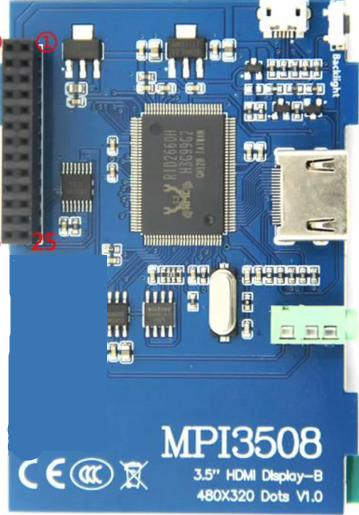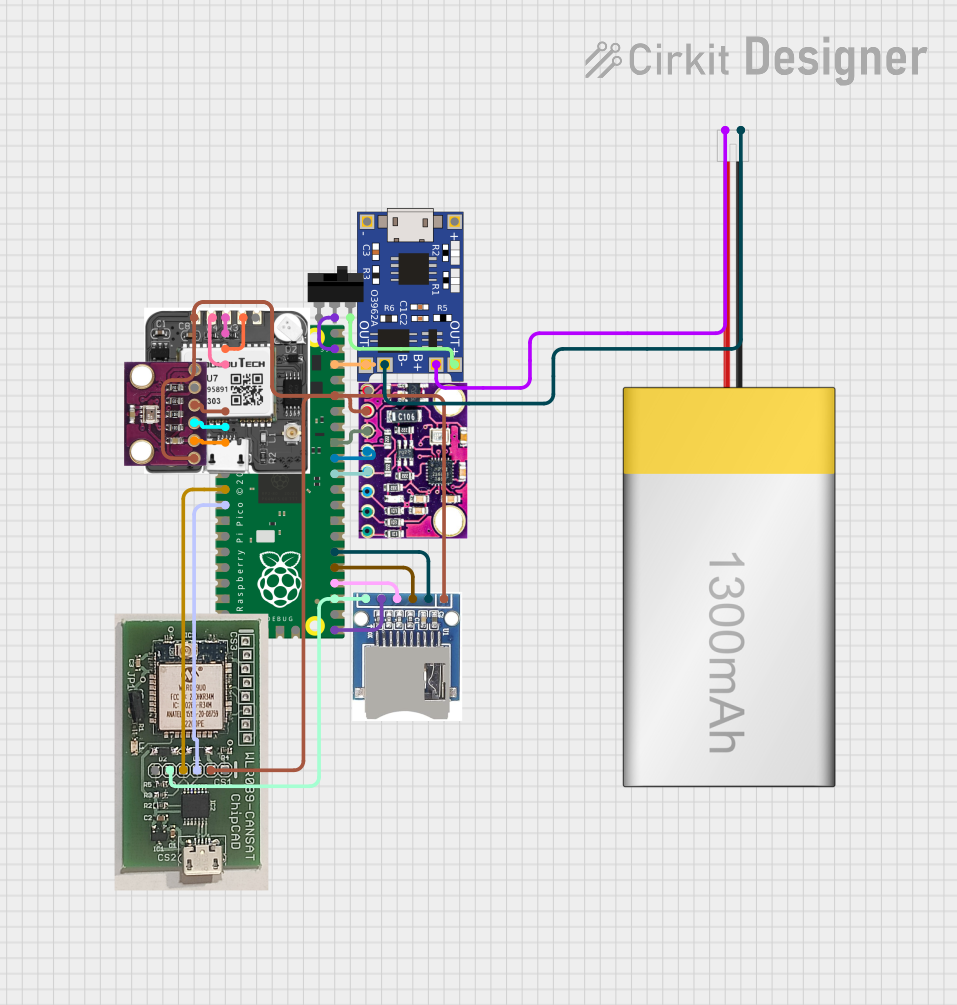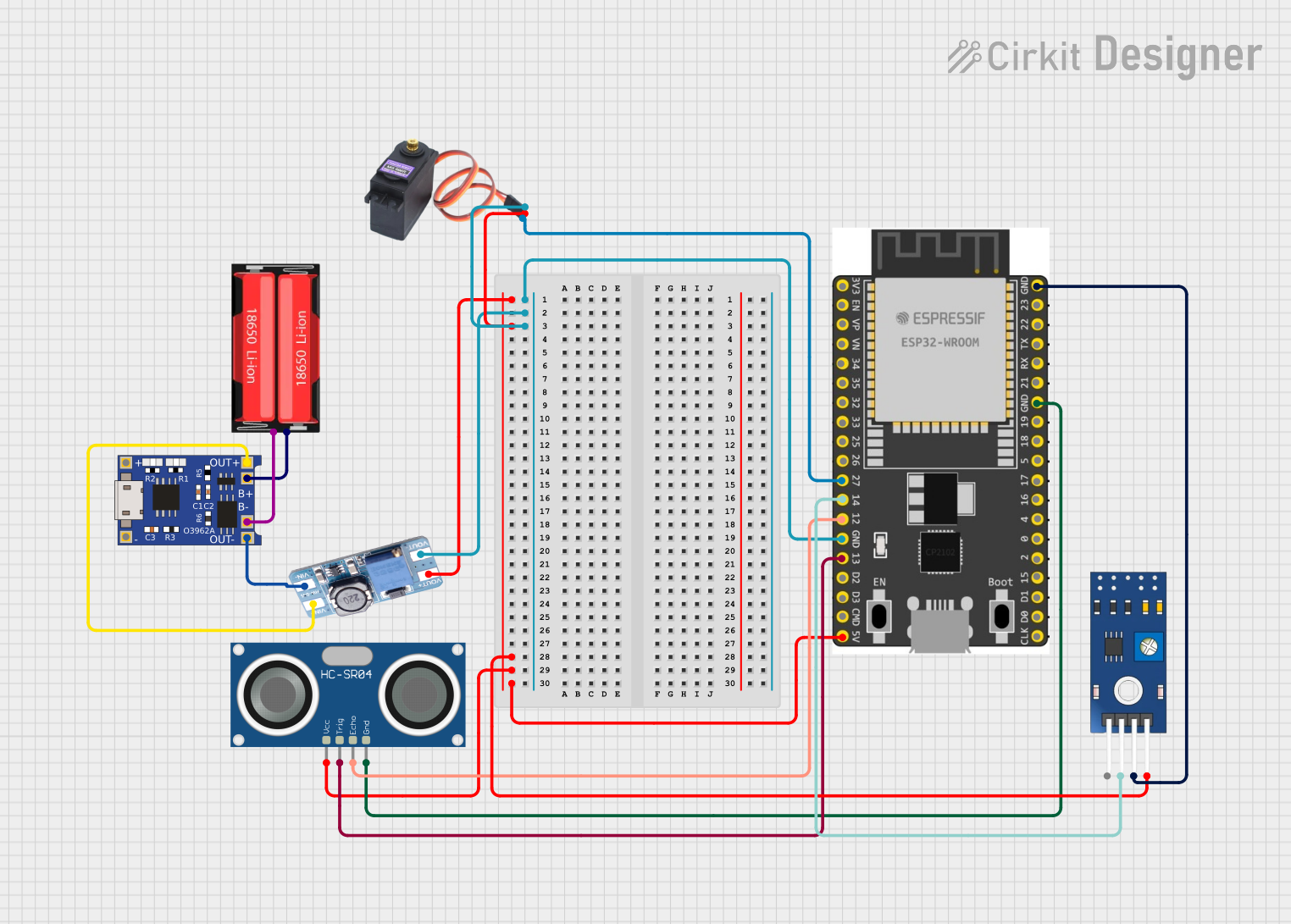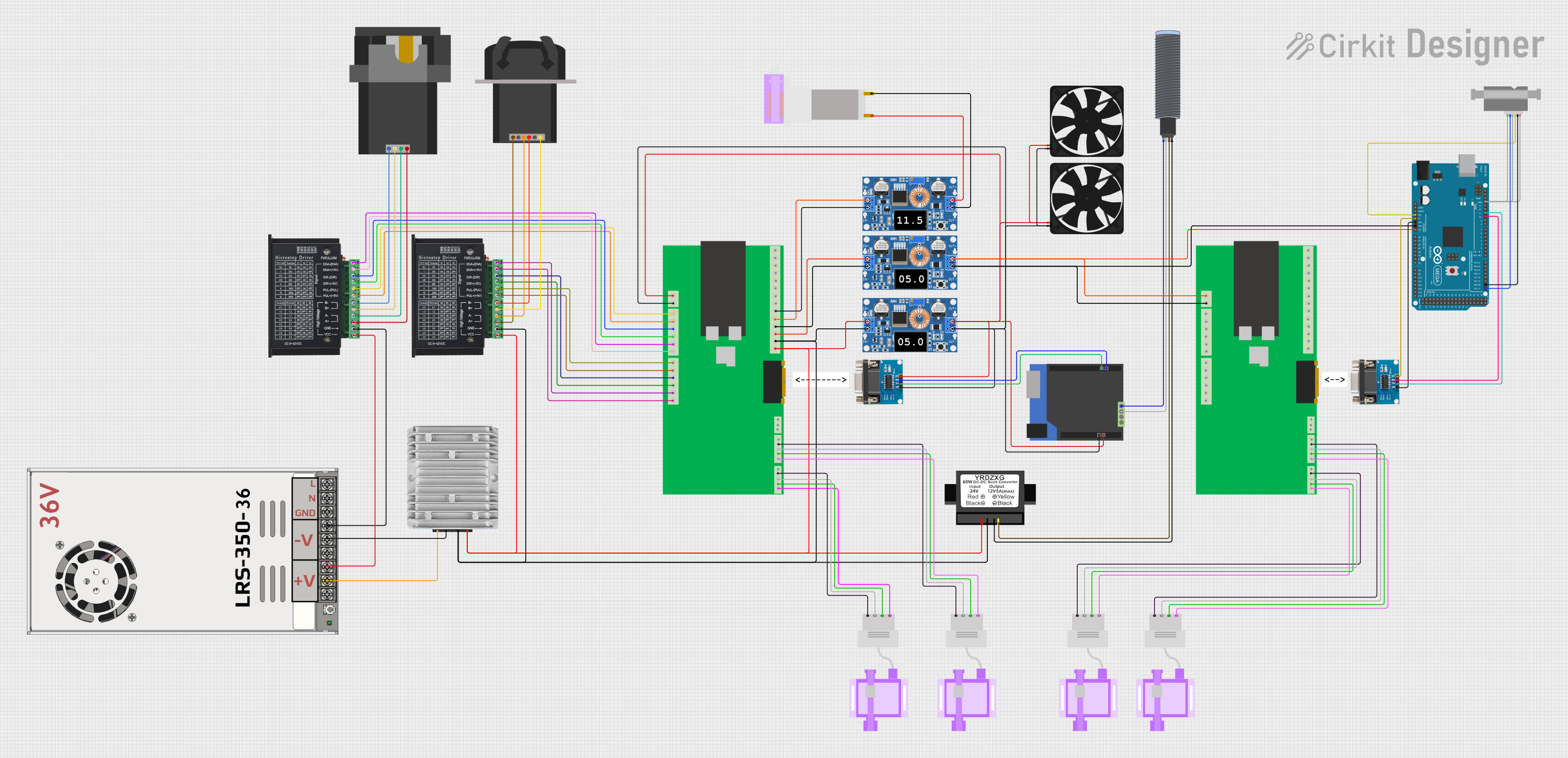
How to Use mpi3508: Examples, Pinouts, and Specs

 Design with mpi3508 in Cirkit Designer
Design with mpi3508 in Cirkit DesignerIntroduction
The MPI3508 is a high-performance, low-power microcontroller designed for embedded applications. It features multiple I/O ports, analog-to-digital conversion (ADC) capabilities, and support for various communication protocols, making it a versatile choice for a wide range of projects. Its compact design and energy efficiency make it ideal for applications such as IoT devices, home automation, robotics, and industrial control systems.
Explore Projects Built with mpi3508

 Open Project in Cirkit Designer
Open Project in Cirkit Designer
 Open Project in Cirkit Designer
Open Project in Cirkit Designer
 Open Project in Cirkit Designer
Open Project in Cirkit Designer
 Open Project in Cirkit Designer
Open Project in Cirkit DesignerExplore Projects Built with mpi3508

 Open Project in Cirkit Designer
Open Project in Cirkit Designer
 Open Project in Cirkit Designer
Open Project in Cirkit Designer
 Open Project in Cirkit Designer
Open Project in Cirkit Designer
 Open Project in Cirkit Designer
Open Project in Cirkit DesignerCommon Applications and Use Cases
- Internet of Things (IoT) devices
- Home automation systems
- Robotics and motor control
- Industrial monitoring and control
- Data acquisition systems
- Wearable electronics
Technical Specifications
The MPI3508 microcontroller offers a robust set of features to meet the needs of modern embedded systems. Below are its key technical specifications:
| Parameter | Value |
|---|---|
| Operating Voltage | 1.8V to 3.6V |
| Maximum Clock Speed | 48 MHz |
| Flash Memory | 64 KB |
| SRAM | 8 KB |
| GPIO Pins | Up to 32 |
| ADC Resolution | 12-bit |
| Communication Protocols | I2C, SPI, UART, CAN |
| Power Consumption | < 1 mA in active mode |
| Operating Temperature | -40°C to +85°C |
| Package Type | QFN-32 |
Pin Configuration and Descriptions
The MPI3508 comes in a 32-pin QFN package. Below is the pin configuration and description:
| Pin Number | Pin Name | Function |
|---|---|---|
| 1 | VDD | Power supply (1.8V to 3.6V) |
| 2 | GND | Ground |
| 3 | PA0 | GPIO/ADC Channel 0 |
| 4 | PA1 | GPIO/ADC Channel 1 |
| 5 | PA2 | GPIO/ADC Channel 2 |
| 6 | PA3 | GPIO/ADC Channel 3 |
| 7 | PB0 | GPIO/Timer Output |
| 8 | PB1 | GPIO/Timer Input |
| 9 | PC0 | I2C SDA |
| 10 | PC1 | I2C SCL |
| 11 | PC2 | SPI MOSI |
| 12 | PC3 | SPI MISO |
| 13 | PC4 | SPI SCK |
| 14 | PC5 | UART TX |
| 15 | PC6 | UART RX |
| 16 | RESET | Reset Input |
| 17-32 | GPIO Pins | General-purpose I/O |
Usage Instructions
The MPI3508 microcontroller is designed to be easy to integrate into embedded systems. Below are the steps and best practices for using the component:
How to Use the MPI3508 in a Circuit
- Power Supply: Connect the VDD pin to a stable power source (1.8V to 3.6V) and the GND pin to ground.
- Reset: Use the RESET pin to initialize the microcontroller. Pull it low momentarily to reset the device.
- GPIO Configuration: Configure the GPIO pins as input or output based on your application. Unused pins should be left floating or pulled to ground.
- Communication Protocols:
- For I2C, connect the SDA and SCL pins to the corresponding lines on your bus.
- For SPI, connect MOSI, MISO, and SCK to the appropriate pins on your SPI device.
- For UART, connect TX and RX to the corresponding pins on your serial device.
- ADC Usage: Connect analog signals to the ADC pins (e.g., PA0-PA3) and configure the ADC module in your firmware.
Important Considerations and Best Practices
- Decoupling Capacitors: Place a 0.1 µF decoupling capacitor close to the VDD pin to reduce noise.
- Clock Source: Use an external crystal oscillator or the internal clock, depending on your application's precision requirements.
- Programming: Use an appropriate programmer/debugger to upload firmware to the microcontroller.
- Power Management: Utilize the low-power modes to reduce energy consumption in battery-powered applications.
Example: Using MPI3508 with Arduino UNO
The MPI3508 can communicate with an Arduino UNO via I2C. Below is an example code snippet to read data from the MPI3508's ADC:
#include <Wire.h> // Include the Wire library for I2C communication
#define MPI3508_I2C_ADDRESS 0x48 // Replace with the actual I2C address of MPI3508
void setup() {
Wire.begin(); // Initialize I2C communication
Serial.begin(9600); // Initialize serial communication for debugging
}
void loop() {
Wire.beginTransmission(MPI3508_I2C_ADDRESS); // Start communication with MPI3508
Wire.write(0x00); // Send command to read ADC channel 0
Wire.endTransmission();
Wire.requestFrom(MPI3508_I2C_ADDRESS, 2); // Request 2 bytes of data
if (Wire.available() == 2) {
int highByte = Wire.read(); // Read the high byte
int lowByte = Wire.read(); // Read the low byte
int adcValue = (highByte << 8) | lowByte; // Combine the two bytes
Serial.print("ADC Value: ");
Serial.println(adcValue); // Print the ADC value to the serial monitor
}
delay(1000); // Wait for 1 second before the next reading
}
Troubleshooting and FAQs
Common Issues and Solutions
Microcontroller Not Responding
- Cause: Incorrect power supply or wiring.
- Solution: Verify that the VDD and GND pins are connected properly and the voltage is within the specified range.
Communication Failure
- Cause: Incorrect I2C or SPI connections.
- Solution: Double-check the wiring and ensure the correct pull-up resistors are used for I2C.
ADC Readings Are Inaccurate
- Cause: Noisy input signals or improper grounding.
- Solution: Use a low-pass filter on the analog input and ensure a solid ground connection.
Overheating
- Cause: Excessive current draw or short circuits.
- Solution: Check for shorts and ensure the current draw is within the specified limits.
FAQs
Q: Can the MPI3508 operate at 5V?
A: No, the MPI3508 operates within a voltage range of 1.8V to 3.6V. Exceeding this range may damage the device.
Q: How many ADC channels are available?
A: The MPI3508 has 4 ADC channels (PA0 to PA3) with a 12-bit resolution.
Q: Does the MPI3508 support PWM?
A: Yes, the GPIO pins can be configured for PWM output using the built-in timers.
Q: Can I use the MPI3508 for battery-powered applications?
A: Yes, the MPI3508 is designed for low-power operation and includes power-saving modes suitable for battery-powered devices.